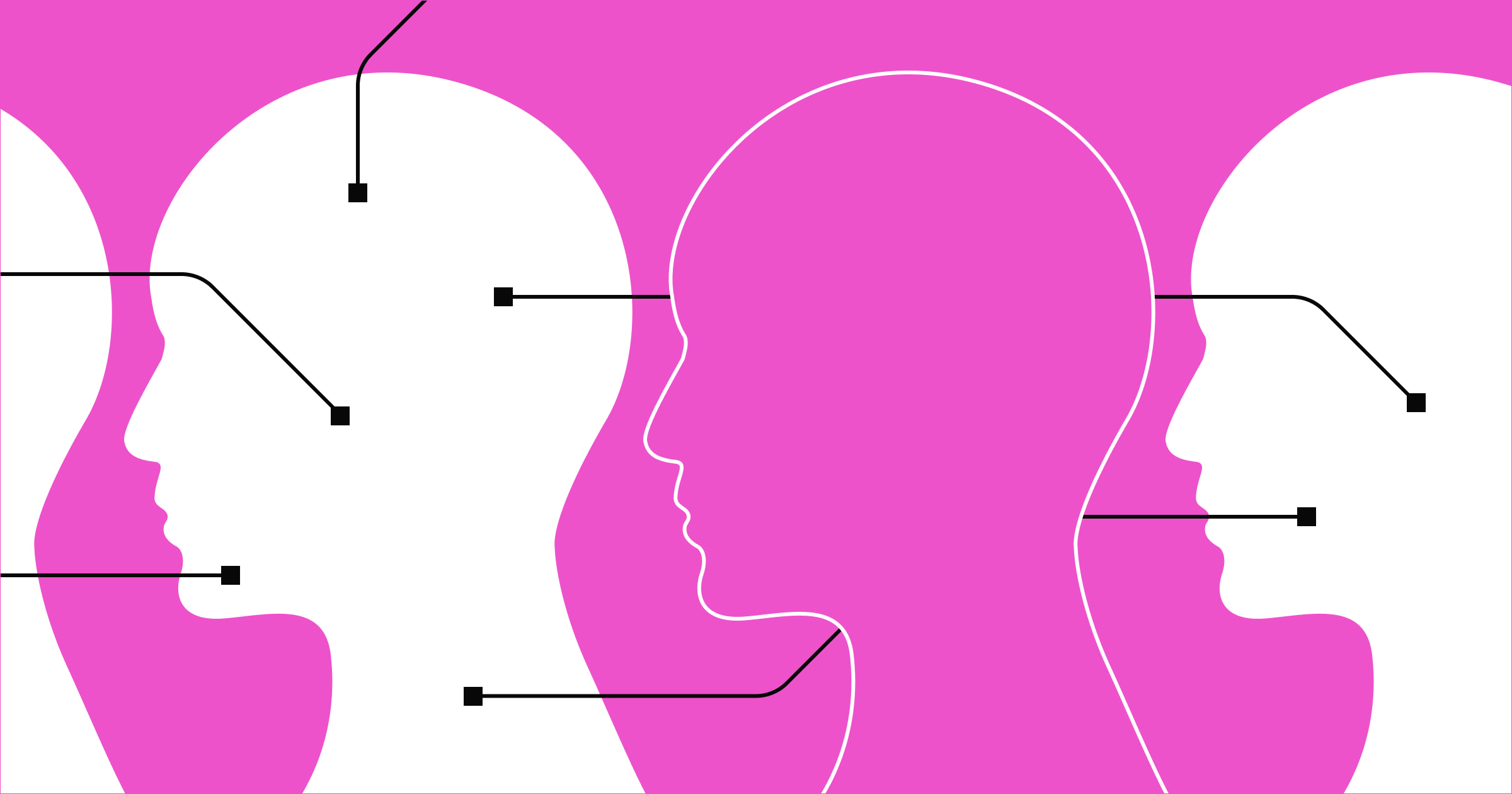Whether you’re a solopreneur or the CMO of a large organization, successful brand promotion requires a multifaceted approach.
Although the two business practices are sometimes referred tointerchangeably, marketing and advertising are distinct concepts that work together to create a comprehensive brand promotion strategy.
Marketing aims to identify, anticipate, and satisfy customer needs, whereas advertising focuses on developing and distributing persuasive messages to encourage customer engagement or promote a product or service.
Some businesses lean heavily on one over the other, believing it’s the most efficient use of their resources. However, this one-dimensional approach doesn’t account for the various channels and touchpoints that customers use to engage with a brand. Ultimately, it limits a business’ ability to effectively connect with its desired audience.
Finding the right balance between marketing and advertising is key. But knowing how to effectively combine them to promote your brand, products, and services starts with understanding their distinctions.
What is marketing?
Marketing is an all-encompassing term for various activities that businesses and service providers use to create value for customers through products or services. Marketing involves functions like market research, branding, product development, customer relationship management, and analytics — all parts of the broader strategy that advertising supports.
Here are three key benefits of marketing:
- Increased sales: Marketing aims to increase sales and revenue by reaching and persuading potential customers to try or buy your services.
- Building brand awareness: Communicating a consistent brand message establishes a strong identity that increases brand recognition, familiarity and differentiates it from your competitors.
- Customer engagement: Engaging with customers through social media, email, and other marketing channels helps businesses receive feedback, identify and address customer needs, and increase brand loyalty.
The marketing mix
Advertising is a marketing component, but you need a marketing strategy before advertising can be effective. The marketing mix is a decision-making matrix that creates an overall approach to satisfying customer needs and wants through products or services.
The 4 Ps of marketing
In 1960, marketing professor E. Jerome McCarthy outlined the four Ps of marketing:
- Product: The product or service that satisfies the customer’s needs or wants
- Price: What customers pay to receive the product or service
- Place: The distribution channels that connect customers with your product or service
- Promotion: How customers find out about your product or service
The 4 Cs of marketing
The problem with the four Ps is that the product or service drives the marketing model instead of the people buying the product or service. In 1990, author and marketing professor Robert F. Lauterborn addressed this issue by proposing the more consumer-oriented four Cs model:
- Consumer wants and needs: the primary focus of the company’s offerings
- Cost: the total cost incurred by customers to satisfy a want or need, including time and effort
- Convenience: the ease with which customers can find, buy, and learn about the product or service
- Communication: a two-way conversation with the customer to build a relationship instead of offering one-sided promotional messaging
What is advertising?
Once you create your marketing strategy, you can identify your ideal customer along with their wants and needs. From there, you can determine how to satisfy them and lay the groundwork for effective advertising.
Advertising employs channels relevant to your target audience to deliver a message that convinces potential customers to purchase your products or services. Many types of advertising exist today, including TV commercials, radio ads, billboards, and digital advertising such as social media ads and website banner ads.
But exploring the myriad advertising channels requires keeping your target audience in mind. Your marketing strategy insights will help identify the most effective channels and ad types to leverage to engage and convert potential customers into actual ones.
Here are three key benefits of advertising:
- Competitive advantage: You can highlight unique selling points and promote your service’s benefits to differentiate yourself from competitors.
- Targeted marketing: You can harness demographics, interests, and other relevant data to tailor ads to your target market’s needs and preferences.
- Call the audience to action: You can use calls-to-action (CTAs) to boost conversions by prompting an audience to make a purchase, visit your website, or engage with your brand in a specific way.
The hierarchy of effects
The hierarchy of effects theory uses a series of behavioral stages to describe advertising’s impact on the customer’s decision-making process. The idea here is that advertising acts as a stimulus, and deciding to buy or not to buy is the response. Here’s how the hierarchy breaks down:
Cognitive
In the cognitive stage, at the top of the hierarchy, potential customers gain brand awareness and learn about the brand’s values, offerings, and unique selling points. This stage is critical as it lays the foundation for future brand-customer interactions. In empirical studies, digital advertisers see that carryover effects (how past exposure impacts future behavior) are often stronger than direct response in search engine advertising — meaning repeated impressions can matter more than one-off conversions.
Affective
In the affective stage, the potential customer assesses how the brand aligns with their lifestyle after they’re made aware of the brand. While customers learn about a brand in the cognitive stage, self-directed interest — and a preference for one brand over another — builds at this stage.
Behavioral
The behavioral (or conative) stage is where a potential customer’s knowledge and preference of a brand converts into conviction. They’ve decided they want the product or service, which leads to the final step: purchasing.



















Build websites that get results.
Build visually, publish instantly, and scale safely and quickly — without writing a line of code. All with Webflow's website experience platform.
Marketing vs. advertising
The theories and models we’ve touched on are just a drop in the bucket of the work marketers, researchers, and psychologists have conducted since marketing started gaining steam in the mid-20th century. But here’s a quick rundown of how marketing and advertising differ:
1. Goals
Marketing aims to generate profitable leads by creating and delivering value to customers. The purpose of advertising is to attract new customers and persuade them to take action, such as making a purchase, visiting a website, or signing up for a service.
2. Main tasks
Marketing's main tasks include branding, market research, competitive analysis, and customer segmentation, aimed at identifying customer needs and creating value propositions that satisfy those needs. Remember, marketing tasks focus on generating awareness about a company’s offerings, creating brand recognition, and building positive customer rapport.
Advertising's main tasks include developing creative marketing campaigns with compelling visuals, headlines, and CTAs that engage customers and drive them to act.
3. Channels
Both marketing and advertising use traditional and online media channels to reach customers, but they differ in their approach and execution.
Marketing uses a combination of channels, such as content marketing, social media marketing, email marketing, and search engine optimization (SEO), to reach and engage customers over an extended period of time. Advertising focuses on paid media channels like TV, radio, print, and online advertising to reach a broad audience and drive immediate results.
4. Strategies
Marketing strategies focus on creating customer value through inbound and content marketing, social media marketing, SEO, and more. These strategies build brand awareness, engage customers, and create a loyal customer base. Advertising strategies focus on capturing attention and driving conversions through paid and organic advertising, influencer marketing, and native advertising to drive immediate results and increase sales.
5. Roles
The roles within marketing typically involve strategic tasks like market research, brand development, and customer segmentation. These roles require a deep understanding of customer needs and behaviors and the ability to create value propositions that meet those needs. Advertising roles usually involve creative tasks like copywriting, design, and media planning. These roles require a strong understanding of consumer behavior and the ability to create compelling campaigns that capture attention and drive action.
Build a website that supports your strategy
Now that you understand the differences between marketing and advertising, it’s time to develop a marketing plan and design a website that supports it. At Webflow, we offer the tools to make websites and the tutorials you need to master using them. Learn about affiliate marketing, setting SMART marketing goals, and more with guidance from our blog and Webflow University. Draw inspiration from our collection of templates and websites and start building your best site yet.































